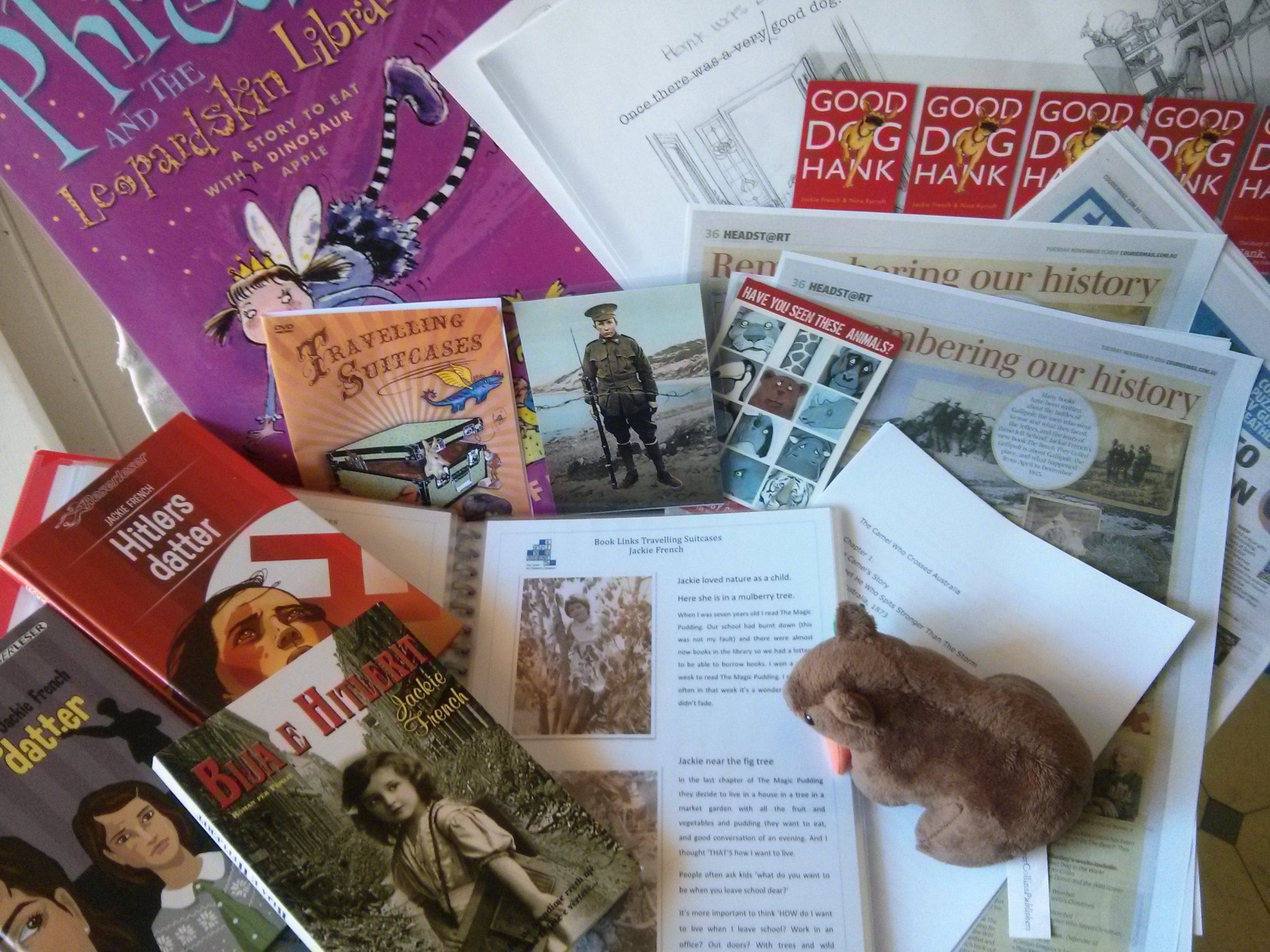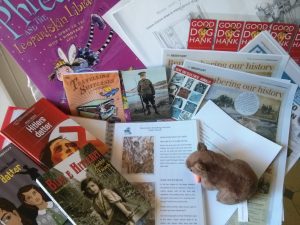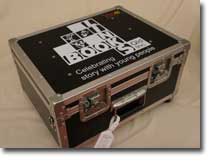




 A Travelling Suitcase is just that – a suitcase packed to the brim with original resources, activities, realia, everything you need to get your students immersed in the working world of a writer or illustrator.
A Travelling Suitcase is just that – a suitcase packed to the brim with original resources, activities, realia, everything you need to get your students immersed in the working world of a writer or illustrator. The Travelling Suitcases are designed to support schools and public libraries who can’t invite an author or illustrator to visit for financial or geographic reasons. Instead, they can borrow a suitcase of resources, including original material, for their chosen author or illustrator and use it to explore how their books were created. The project kicked off in 2010 and now there are twelve cases covering six creators, ready for distribution throughout Queensland.
The Travelling Suitcases are designed to support schools and public libraries who can’t invite an author or illustrator to visit for financial or geographic reasons. Instead, they can borrow a suitcase of resources, including original material, for their chosen author or illustrator and use it to explore how their books were created. The project kicked off in 2010 and now there are twelve cases covering six creators, ready for distribution throughout Queensland. Each case includes a ten-minute video that was filmed in the workspace of each creator. For the Jackie French case. we almost had wombat poo collected from underneath Jackie’s house added to her cases but sadly it disintegrated too fast. Other content includes a selection of books, edited manuscripts, storyboards, activities to use in the classroom and in public libraries and varying from case to case, other interesting objects. These vary from dress up items and soft toys to engage young readers to art materials and linocut blocks donated by the artists. Some cases include foreign language editions of books.
Each case includes a ten-minute video that was filmed in the workspace of each creator. For the Jackie French case. we almost had wombat poo collected from underneath Jackie’s house added to her cases but sadly it disintegrated too fast. Other content includes a selection of books, edited manuscripts, storyboards, activities to use in the classroom and in public libraries and varying from case to case, other interesting objects. These vary from dress up items and soft toys to engage young readers to art materials and linocut blocks donated by the artists. Some cases include foreign language editions of books. When a book creator pays a visit, they usually talk about their creative processes in writing or illustration. The cases were designed as another option to learn more about these processes and engage more closely with the books. They have been designed to provide a range of interesting and quality resources in one suitcase, that an author or illustrator has used to create a book. It has been shown that when children meet an author, they become more engaged with their books and borrowing rates for that author increases.
When a book creator pays a visit, they usually talk about their creative processes in writing or illustration. The cases were designed as another option to learn more about these processes and engage more closely with the books. They have been designed to provide a range of interesting and quality resources in one suitcase, that an author or illustrator has used to create a book. It has been shown that when children meet an author, they become more engaged with their books and borrowing rates for that author increases. Some schools and libraries have used the contents to set up displays in their libraries and some classroom teachers borrow them to use during author studies. A few Brisbane and Sunshine Coast schools have taken advantage of using the cases as a lead up to an actual visit by the author. However, as the cases were developed more than ten years ago, these creators are generally not doing school visits any more and sadly two have passed away.
Some schools and libraries have used the contents to set up displays in their libraries and some classroom teachers borrow them to use during author studies. A few Brisbane and Sunshine Coast schools have taken advantage of using the cases as a lead up to an actual visit by the author. However, as the cases were developed more than ten years ago, these creators are generally not doing school visits any more and sadly two have passed away.Error: Contact form not found.
